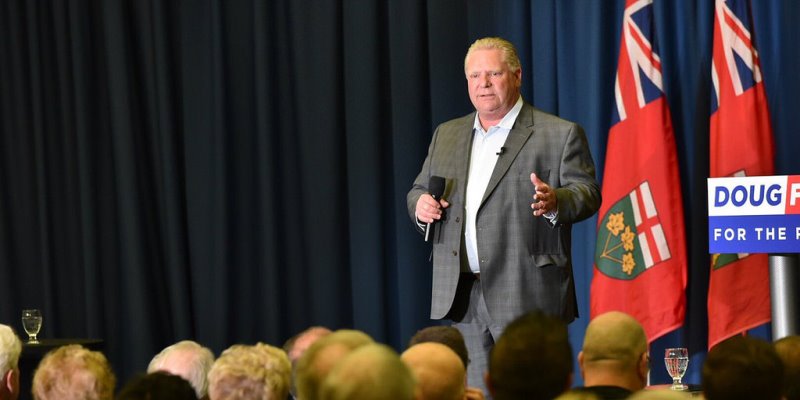Ford government following fiscal strategy of its predecessors

Last week, Premier Ford’s government tabled its budget for the 2019/20 fiscal year. Those hoping for a fast path to fiscal recovery were likely disappointed. The budget forecasts another deficit of more than $10 billion this year without a return to balance until 2023/24.
To be sure, if implemented this fiscal plan will represent a marked improvement over the pre-election spending binge of the past two years. This year’s budget calls for a slowdown in spending growth to approximately one per cent annually.
Still, given how critical the Ford team was of the Wynne government’s spending habits, it’s surprising it hasn’t rolled back some of the nominal spending growth of the past two years and is instead pushing forward with spending increases—again, albeit a slower rate.
In other words, the Ford government has accepted the high spending levels of the late Wynne years as a baseline instead of reforming and reducing government spending, and in the process, has committed the province to many more years of deficits and substantial new debt accumulation.
What’s perhaps most striking about the Ford government’s first budget is that, despite any rhetoric, it closely resembles the deficit-reduction strategy Ontario’s Liberal governments pursued in the years following the 2008/09 recession. Back then, the Liberals tried to slowly shrink the deficit by slowing their high rate of spending growth and hoping for revenue to catch up over time.
Specifically, prior to its pre-election spending surge, the Wynne government reduced the deficit slowly by restraining nominal spending growth. From 2011/12 to 2016/17, nominal program spending in Ontario grew at an average annual rate of 1.4 per cent.
The problem was that Ontario’s fiscal hole was so large that even with this slowdown in spending, deficits persisted and the province’s debt burden grew.
The Ford government’s Wynne-like strategy means Ontario’s net debt will reach a forecasted $391.6 billion by the time the budget is finally balanced.
Another similarity between the Ford government (so far) and its predecessors is an unwillingness to meaningfully make the province’s tax system more competitive. It’s made made no moves to reduce the province’s top combined provincial/federal marginal income tax rate—the second highest in North America. Nor did it make the corporate income tax rate more competitive by finally making good on an unkept promise of governments past and lowering it from 11.5 per cent to 10 per cent.
Recent tax reform in the United States has made this policy change even more urgent, and yet on the general corporate income tax rate, the Ford government has so far chosen to maintain Liberal policy.
So while the return to modest spending restraint after two years of unsustainable growth is a step in the right direction, the lack of action on tax competitiveness, the long and risky path to balance, and the continued plan for more debt accumulation define the Ford government’s fiscal policy. Only time will time if this government decides to get serious about Ontario’s finances.
Author:
Subscribe to the Fraser Institute
Get the latest news from the Fraser Institute on the latest research studies, news and events.

